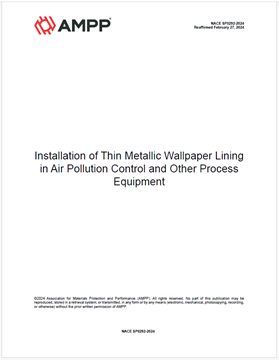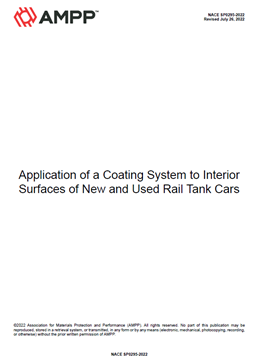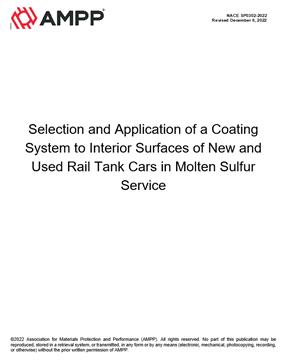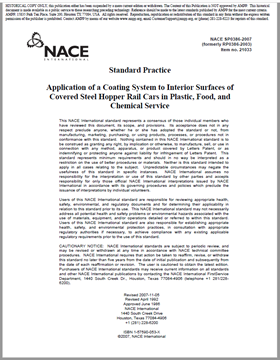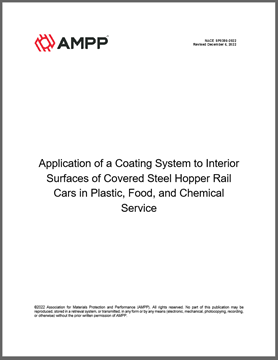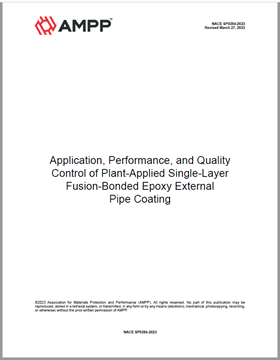Search
NACE Standards
View as
Sort by
Display
per page
NACE SP0292-2024, Installation of Thin Metallic Wallpaper Lining in Air Pollution Control and Other Process Equipment
Product Number:
NACE SP0292-2024
$109.00
NACE SP0295-2008, Application of a Coating System to Interior Surfaces of New and Used Rail Tank Cars
Product Number:
21070-SG
Publication Date:
2008
$179.00
NACE SP0295-2022, Application of a Coating System to Interior Surfaces of New and Used Rail Tank Cars
Product Number:
NACE SP0295-2022
Publication Date:
2022
$109.00
NACE SP0298-2023, Sheet Rubber Linings for Abrasion and Corrosion Service
Product Number:
NACE SP0298-2023
Publication Date:
2023
$109.00
NACE SP0302-2022, Selection and Application of a Coating System to Interior Surfaces of New and Used Rail Tank Cars in Molten Sulfur Service
Product Number:
NACE SP0302-2022
Publication Date:
2022
$109.00
NACE SP0304-2016 (Formerly RP0304), Design, Installation, and Operation of Thermoplastic Liners for Oilfield Pipelines
Product Number:
21103-SG
Publication Date:
2016
$179.00
NACE SP0304-2023, Design, Installation and Operation of Thermoplastic Liners for Oilfield Pipelines
Product Number:
NACE SP0304-2023
Publication Date:
2023
$109.00
NACE SP0315-2015/IEEE Std 1835-SG, "Standard for Atmospheric (Above Grade) Corrosion Control of Existing Electric Transmission, Distribution, and Substation Structures by Coating Systems"
Product Number:
21188-SG
ISBN:
1-5790-309-1
Publication Date:
2015
$109.00
NACE SP0386-2007 (formerly RP0386), Application of a Coating System to Interior Surfaces of Covered Steel Hopper Railcars in Plastic, Food, and Chemical Service
Product Number:
21033-SG
Publication Date:
2007
$179.00
NACE SP0386-2022, Application of a Coating System to Interior Surfaces of Covered Steel Hopper Rail Cars in Plastic, Food, and Chemical Service
Product Number:
NACE SP0386-2022
$109.00
NACE SP0394-2023, Application, Performance, and Quality Control of Plant-Applied Single-Layer Fusion-Bonded Epoxy External Pipe Coating
Product Number:
NACE SP0394-2023
Publication Date:
2023
$109.00

